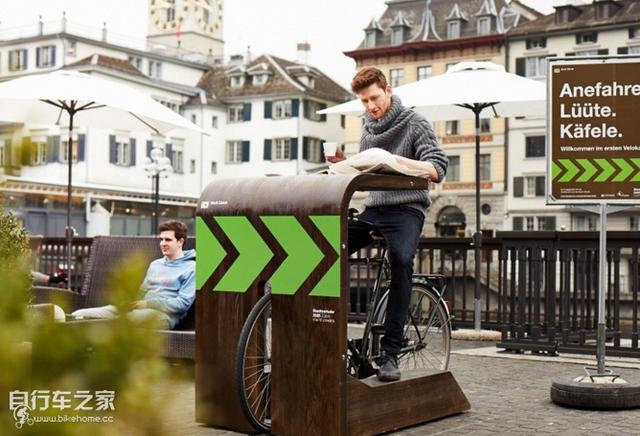Why open 2 Starbucks at a distance of 200 meters? Analyze the advantages of intensive shop opening.
Guide: in the face of the three mountains of "high housing rent, high employee wages, and high cost of food materials", some catering operators reduce costs by means of "reducing staff wages" and "reducing the quality of food materials", but these are all unfashionable games!
Contributor: Ma Bo
Steamed stuffed bun Tang member, talent. Engaged in operation management and technical management for about 20 years. He has worked in old state-owned enterprises, international large Chinese enterprises, leading foreign enterprises in the global industry and local private enterprises.
Recommended words:
This article first presents a special business phenomenon in the business center area-the dense distribution of stores of the same brand, and then analyzes the relevant reasons and comparative advantages from the perspective of enterprise operation. Let's sort it out briefly.
First to seize the commanding heights, both for gathering points and convenience advantage points
Then the layout creates momentum and optimizes the cost operation by opening more stores.
Finally, it focuses on analyzing the advantages of intensive store opening, improving awareness, trust, consumption willingness, improving logistics efficiency, reducing management costs, and making advertising and promotion more effective.
These are the patterns that the author of this article shows us, but how does it work behind it? Is there a more in-depth reason? We need to look at the 7-11 phenomenon from a different perspective.
Two years ago, I was walking on a small street in Taipei. When I was walking at the crossroads, I suddenly wanted to buy a bottle of water to drink. I looked around and found three 7-Eleven convenience stores within a range of less than 100 meters. This touched me. Why is it so dense? I want to see what these three stores are selling. In fact, the three stores sell almost the same products, but they are somewhat different from 7-Eleven in Taipei's CBD district. The products here are more daily and daily.
In the next few days, we paid special attention to the 7-Eleven convenience stores in Taiwan. There are obvious differences among stores in business districts, transportation hubs, tourist areas and residential areas, but the commonness is the dense distribution. Later, I observed the 7-Eleven convenience store in the mainland and found that after opening a store in one location, the external performance immediately began to establish a relationship of customer cognition and trust, and its internal main task was to enter the lifestyle of customers in the region as a seed, explore customer needs, configure the most suitable products and services, and at the same time begin to mobilize its efficient supply chain to prepare for future scale operations. Soon other branches will be located and distributed in the surrounding area, thus gradually forming a convenient path and coverage of the surrounding area, providing customers with a convenient lifestyle of 7-11, which is the convenient community of 7-11. Will also continue to explore customer needs, deepen the level of service. Over time, 7-11 has become a convenient service center for surrounding customers, and customer consumption has become a high-frequency repeated consumption and a good word of mouth.
This is the real gene that 7-11 survived in the business district, and this is a practical example of an established and real offline community business model. Of course, 7-11 also has a strong IT system and advanced supply chain to support its efficient operation and management.
/ Wang Xinlei | Source: Jiamen
At a time when many catering operators are still worried about the three mountains of high rent, high wages and high cost of food, Starbucks and 7-Eleven convenience stores have chosen a strategy that goes against common sense: to reduce costs in a honeycomb way.
First, seize the commanding heights: the storefront is the best advertisement
The storefront is also an advertising space, especially in prime locations. If you want to get a good position in a prime location, you have to get rid of the "charterer". Definitely not hard, not even pretending to be forced, the big names behind are still waiting in line. Take down the berth, the management is not good, and finally work for the "charterer".
Players in the catering world have long been out of the level and out of the realm. For example, Starbucks grabs gold shops, is willing to spend money, but also knows how to enjoy it. They measure it in six dimensions, the most distinctive of which are two:
1. Grab the spot and find the gathering place.
After selecting the business district, Starbucks will measure the flow of people, determine the main flow lines, select the gathering point, and use the location not far apart as the location of the store.
Because on the main flow line of the flow of people, it means that the flow of people passing through per unit time is the largest; in the position of the gathering point, it means that the crowd stays here for a long time.
This brings the most direct "benefit": whether consumers can see the store at a glance when walking down the street.
two。 Convenience
The convenience of transportation and the accessibility of store sites are important conditions for consumers to choose.
The number of parking spaces, the radiation area of the business area and the number of parking spaces in the radiation area are the issues that every catering enterprise should consider. The purpose of this consideration is to increase the rate of guests entering the hotel.
Second, the layout creates momentum: the more shops you open, the lower the cost.
"the more stores you open, the lower the cost." this may seem a bit against common sense, but it is a great way to resolve high rents. Starbucks made it clear that even if it is profitable, they will not do it if they open a store in a city.
The reason is very simple, because the logistics cost of many products is very high, especially the pastry, all seamless docking under the condition of minus 18 degrees, so the logistics cost is very high.
Although the sales of single store is high, but the operating cost is also very high, so Starbucks' operation is to open 2-3 stores as soon as possible after opening the first store.
For example, after opening its first store in Lijiang, Starbucks will open 2-3 more stores as soon as possible this year, using "increasing the number of stores to reduce logistics costs."
This is also a tried-and-tested "kill trick" by 7-Eleven.
Minwen Suzuki, founder of 7-Eleven, said that after the opening of the first store, he began to implement the intensive location strategy, strictly requiring store R & D leaders to be the same as the first store. "never take a step out of Jiangdong District," which involves a variety of factors.
If you just want to simply increase the total number of stores, the extreme way is to open stores separately, with one in Tokyo, one in Kanagawa Prefecture and one in Saitama Prefecture to deploy franchise stores across the country.
However, in order to improve the production efficiency of small-scale convenience stores, not only efforts should be made on the layout of stores to enhance customers' interest in consumption, but also reasonable and effective procurement and logistics systems must be provided. only in this way can we flexibly meet the various needs of consumers.
For the above considerations, it is not advisable to cast a net everywhere. Rather than scattered "points", chain stores should be covered in a "noodle" way, expanding in a network adjacent to existing stores.
Hot pot black horse Banu hairy belly hot pot in the development of direct chain, is to adopt a step-by-step urban war, that is, to open more than one store in a city, rather than a horse racing enclosure.
This unconventional operation is intentional.
First, the regional manager has a management radius of 8 to 10 stores, and any more, it will get out of control.
Second, the transportation radius is within 200 kilometers.
These two radii determine that in order to maximize efficiency and minimize cost, it is necessary to have a dense layout: the more stores you open, the lower the cost.
III. Three advantages of dense layout
When the enemy is strong and we are weak, Mao Zedong "opposes the strategy of punching two fists in both directions at the same time and adheres to the strategy of punching two fists together in the same direction".
"four Crossing Chishui" and "three major battles".... When people marvel at the ingenuity of Mao Zedong in directing the war, it benefits from the method of concentrated forces.
The intensive layout of food and beverage will also give rise to more and more advantages, and the strategy of intensive distribution in a target area will benefit enterprises more than sprinkling pepper noodles.
In a certain area, improve the brand effect, deepen consumers' recognition, and the degree of recognition is linked to the trust of consumers, which can promote the willingness of consumption.
When stores are concentrated in a certain range, the short distance between stores can improve the efficiency of logistics and distribution. It also reduces management costs.
Advertising and promotional campaigns are more effective. If shops are concentrated in the same area, not only logistics and labor costs can be effectively saved, but also the influence and coverage of a promotion will get twice the result with half the effort.
Source: management wisdom
Important Notice :
前街咖啡 FrontStreet Coffee has moved to new addredd:
FrontStreet Coffee Address: 315,Donghua East Road,GuangZhou
Tel:020 38364473
- Prev

What is the most zhuangbility "hand flush" these days? The combination of fashion and coffee is great!
This young girl has studied on the Internet that the hand-made coffee is actually called dripping filter coffee drip coffee, which simply means grinding the coffee into a funnel or filter cup and then adding a layer of filter paper, pouring hot water on top, hot water passing through the coffee bean powder, taking away the taste of the coffee and turning it into coffee from under the funnel. Jiaojiao: it is said that this is the most popular way to make coffee, and it is also
- Next

Switzerland launches bicycle coffee space for convenience and creativity. There are unlimited designs that you can't think of.
In response to Zurich's enthusiasm for cycling, the Swiss government, with the help of designers, launched coffee stands specially designed for cyclists. It allows guests who come by bike to put the car directly under a special wooden table and use it as a chair. At present, this kind of coffee shop for bicycles can be found in the municipal coffee shop on the riverside of Switzerland. In order to promote this project, all users will
Related
- What ratio of water temperature and ground does the smart cup method use to press coffee? The difference between brewed coffee and filtered coffee?
- What is the standard process for the purpose of coffee cup testing? What is the difference between hand-brewed coffee and cup testing?
- How to use hand-brewed coffee paragon small golden balls? How does cold coffee lock in the aroma of coffee?
- Is American coffee black? What is the difference between American coffee and drip coffee?
- Unexpected! Well-known tea beverage brand Lele Tea will withdraw from the Zhengzhou market!
- Starbucks enters the fashion and beauty industry?! Netizen: Give me an ice American eye cream
- Why can American refills for free? The difference between Americano and American drip pot coffee
- Being chased out of the rain in front of Starbucks?! Store: Sheltering from rain under umbrellas poses a safety hazard
- The white moonlight has changed?! Lucky launches "Big Winter Pear American"
- Hand-brewed coffee three-stage method, high-sweet and universal brewing method to share! What does the high sweet water level of hand-brewed coffee mean?

